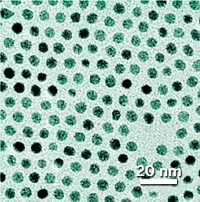Advertisement
Grab your lab coat. Let's get started
Welcome!
Welcome!
Create an account below to get 6 C&EN articles per month, receive newsletters and more - all free.
It seems this is your first time logging in online. Please enter the following information to continue.
As an ACS member you automatically get access to this site. All we need is few more details to create your reading experience.
Not you? Sign in with a different account.
Not you? Sign in with a different account.
ERROR 1
ERROR 1
ERROR 2
ERROR 2
ERROR 2
ERROR 2
ERROR 2
Password and Confirm password must match.
If you have an ACS member number, please enter it here so we can link this account to your membership. (optional)
ERROR 2
ACS values your privacy. By submitting your information, you are gaining access to C&EN and subscribing to our weekly newsletter. We use the information you provide to make your reading experience better, and we will never sell your data to third party members.
Synthesis
Hybrid Photocatalyst Produces H2Rapidly
Coupling photosystem I and a cobalt complex yields an inexpensive yet active catalyst
by Mitch Jacoby
October 3, 2011
| A version of this story appeared in
Volume 89, Issue 40
Nature’s photosynthesis machinery can be combined with inexpensive synthetic transition-metal-based catalysts to yield a complex that rapidly produces hydrogen from water in the presence of light (J. Am. Chem. Soc., DOI: 10.1021/ja206012r). The study, conducted by researchers at Argonne National Laboratory, demonstrates a strategy for synthetically enhancing properties of photosynthesis systems to produce fuels from sunlight. Various strategies have been tried previously to exploit photosynthesis for fuel production. Examples include synthesizing mimics of natural metal complexes and coupling photosynthesis proteins such as photosystem I (PSI) with enzymes or with platinum nanoparticles. Earlier this year, Argonne’s Lisa M. Utschig and coworkers showed that a PSI-platinum nanoparticle complex rapidly liberates H2 from water (C&EN, Jan. 31, page 45). Now, a team led by Utschig has replaced the nanoparticles with cobaloxime, a molecular catalyst based on the more abundant and less expensive metal cobalt. The self-assembling PSI-cobaloxime complex produces H2 at about half the rate of the most active platinum nanoparticle system, but at rates up to 200 times faster than other artificial photosynthesis strategies.



Join the conversation
Contact the reporter
Submit a Letter to the Editor for publication
Engage with us on Twitter